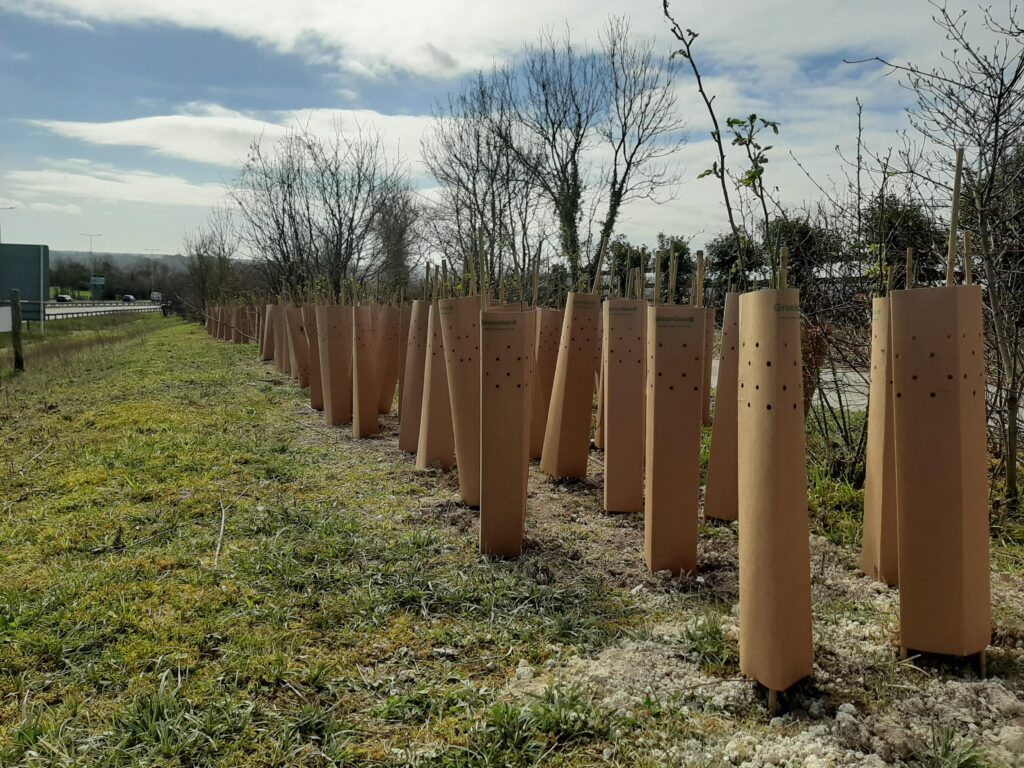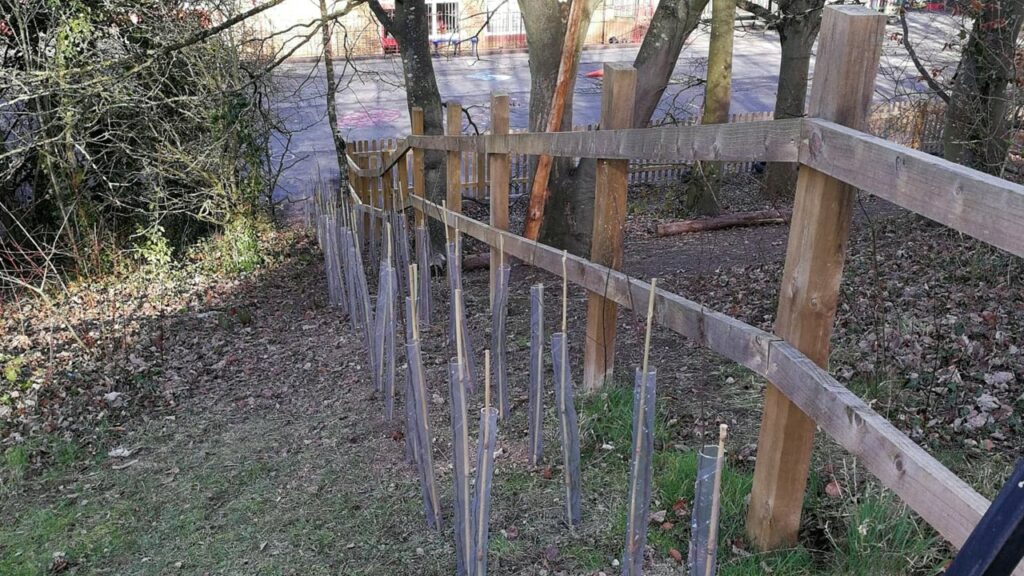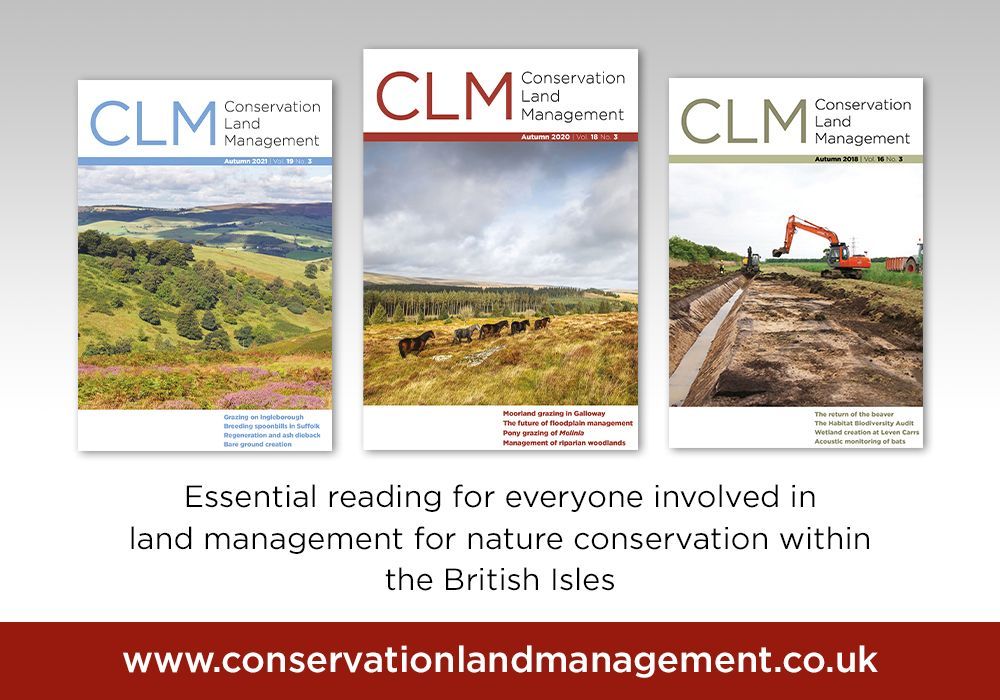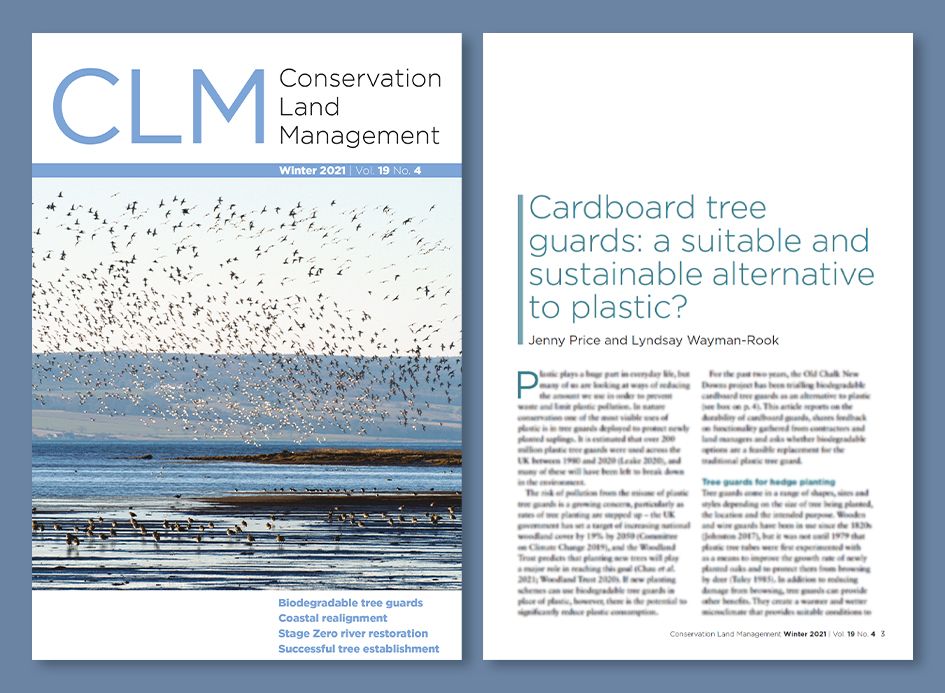In the forthcoming Winter 2021 issue of Conservation Land Management (CLM) magazine Jenny Price and Lyndsay Wayman-Rook describe how the Old Chalk New Downs project in Kent has been trialling biodegradable cardboard tree guards as an alternative to plastic. Here you can read a summary of the article.
The main purpose of a tree guard is to protect newly planted trees from browsing, but they also provide other benefits; they create a more favourable microclimate that helps to promote the growth of young trees and protect the plants from wind, competing vegetation, herbicides and water loss. Wooden and wire tree guards have been in use since the 1820s, but it wasn’t until the 1980s that plastic versions were first used. As a cheaper material compared to alternatives, plastic is now widely used for guards in planting schemes.
It has been predicted that between 1980 and 2020 over 200 million plastic tree guards were used, and with the UK government’s ambitious target to increase woodland cover by 19% by 2050, the rate of tree planting is sure to increase, as will the number of tree guards used. It is recommended that plastic tree guards are removed 2–3 years after their installation, but they are often left behind to degrade in the landscape, which can be both damaging to the wider environment (although the impacts of this are not yet fully understood) and to the tree itself. It is possible to recycle plastic polymer guards, but not if they have already started to break down or are contaminated.

The Old Chalk New Downs project, hosted by Kent County Council and funded by the National Lottery Heritage Fund, has been exploring alternative options to plastic tree guards. It first compared the costs of different materials, including plastic, cardboard and biodegradable plastic, and looked at the pros and cons for each guard type. For instance, one of the advantages of a cardboard guard is that it does not need to be removed after installation, but it may deteriorate a lot faster than other guard types, especially in particularly wet areas.

It was decided that cardboard guards would be used for this particular project, owing to their no-plastic design and availability. Between autumn 2019 and spring 2021, more than 9,000 trees with cardboard guards were planted across seven hedgerows at three different sites. How these fared was closely monitored, and the success rate of planting was high. One key aspect of this project was to gather feedback from landowners and contractors involved in sourcing and using the cardboard guards, and overall the comments were positive.
In the full article Jenny Price and Lyndsay Wayman-Rook discuss how the cost of tree guards made from plastic, biodegradable plastic and cardboard compare, and provide an in-depth overview of how cardboard guards performed when used for hedge planting, both in this project and in examples from elsewhere. They also include a summary of the feedback received from landowners and contractors, and clearly describe the advantages and disadvantages of different tree guard options.

Other articles featured in the Winter 2021 issue include:
- RSPB Nigg Bay: Scotland’s first coastal realignment
- Helping to make and document conservation decisions: the Evidence-to-Decision tool
- The Stage Zero approach – lessons from North America on restoring river, wetland and floodplain habitats
- Viewpoint: Plant fewer, better: good tree and shrub establishment
In this and every issue you can expect to see Briefing, keeping you up to date with the latest training courses, events and publications, and On the ground which provides helpful tips or updates on products relevant to land management. Other features that regularly appear in CLM include Viewpoint, a similar length to our main articles, but here authors can voice their own views on various conservation issues, and Review, which can include letters from readers or updates from our authors.
 CLM is published four times a year in March, June, September and December, and is available by subscription only, delivered straight to your door. Subscriptions start from £22 per year. Previous back issues are also available to purchase individually (subject to availability). Current subscribers can expect to receive their copy of the Winter 2021 issue in the next couple of weeks.
CLM is published four times a year in March, June, September and December, and is available by subscription only, delivered straight to your door. Subscriptions start from £22 per year. Previous back issues are also available to purchase individually (subject to availability). Current subscribers can expect to receive their copy of the Winter 2021 issue in the next couple of weeks.
If you are involved in a conservation project and think your experiences could be useful to other practitioners, we would love to hear from you. If you are interested in writing for CLM feel free to contact us – we will be happy to discuss your ideas with you.







